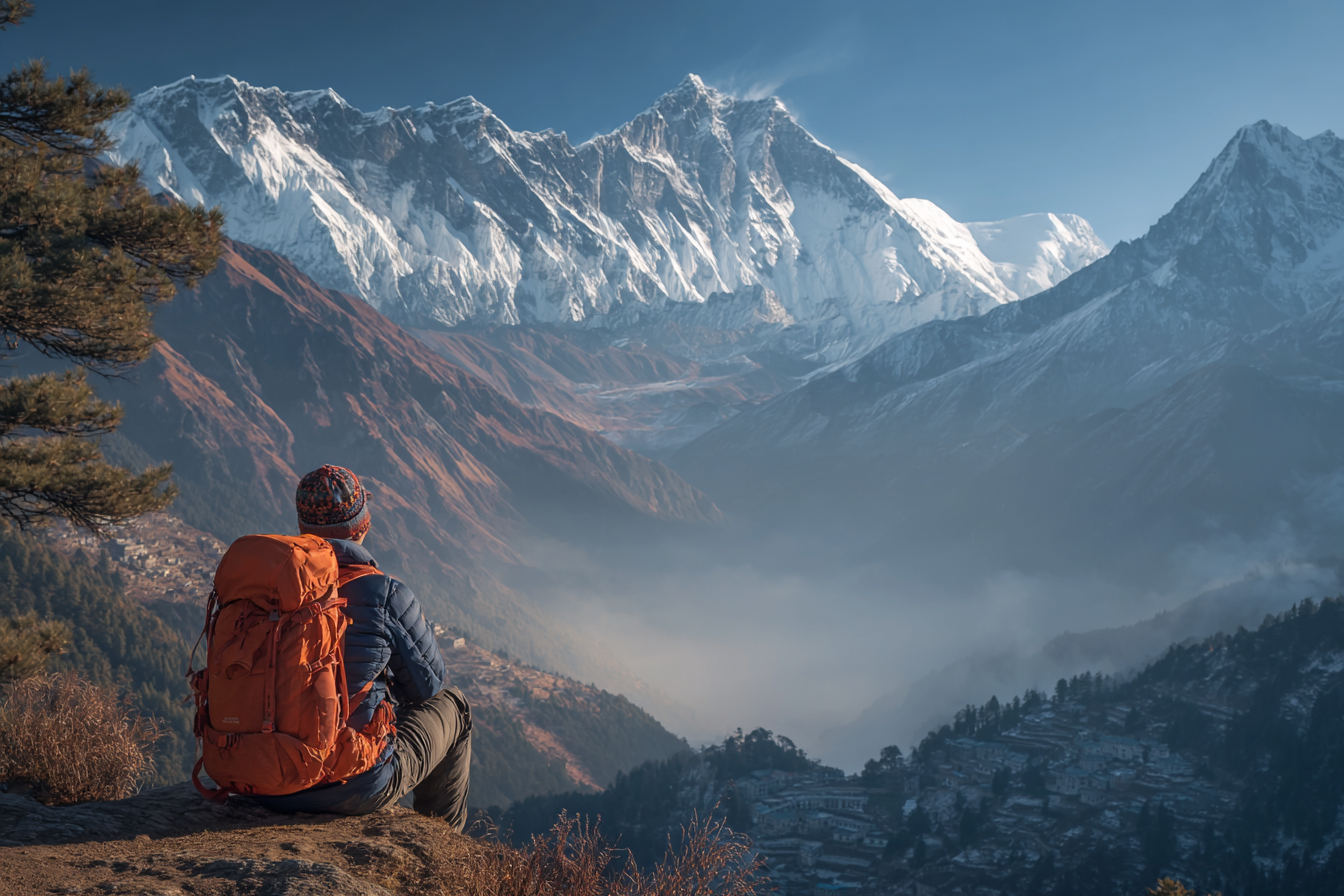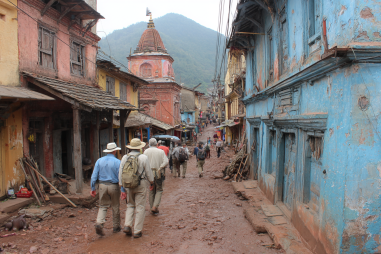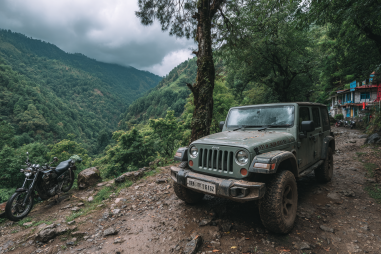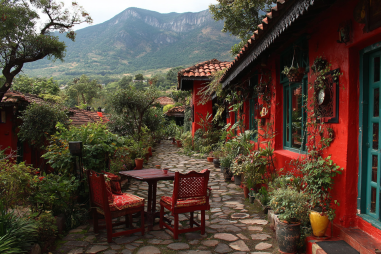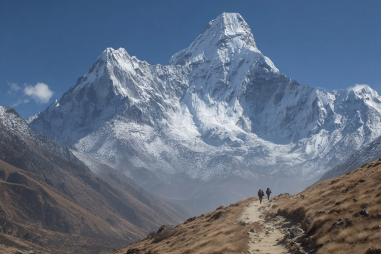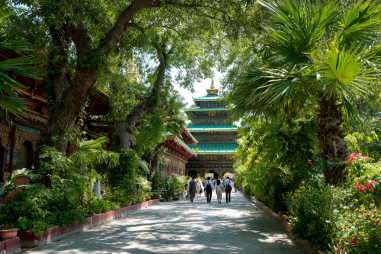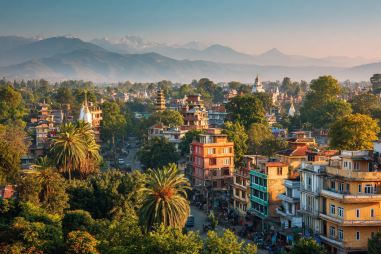Trekking to Namche Bazaar, the gateway to the Everest region, is a dream for many adventurers and nature lovers. However, the high altitude poses unique challenges that can impact your health and overall trekking experience. Acclimatization is the critical process that helps your body adapt to reduced oxygen levels and prevents altitude sickness. Understanding how to acclimatize properly will ensure you enjoy your trek safely and comfortably. This article offers expert Namche Bazaar acclimatization tips to guide you through the process with confidence.
Understanding Altitude Sickness
Altitude sickness, also known as acute mountain sickness (AMS), occurs when your body struggles to adjust to the lower oxygen levels found at higher elevations. At altitudes above 2,500 meters (8,200 feet), the air contains less oxygen, making breathing more difficult and potentially causing symptoms such as headaches, nausea, dizziness, and fatigue. In severe cases, altitude sickness can escalate to life-threatening conditions like high altitude pulmonary edema (HAPE) or high altitude cerebral edema (HACE).
Namche Bazaar sits at approximately 3,440 meters (11,290 feet), which is high enough for many trekkers to experience AMS if they ascend too quickly or don’t allow adequate time for their bodies to adjust. Recognizing the symptoms early and knowing how to prevent altitude sickness is crucial for your safety.
Why Acclimatization Is Important in Namche Bazaar
Namche Bazaar serves as a key acclimatization stop for trekkers heading to Everest Base Camp and other high-altitude destinations. Spending extra days here helps your body produce more red blood cells and improve oxygen transport, which significantly reduces the risk of altitude sickness later in your journey.
Skipping or rushing through acclimatization in Namche may lead to debilitating symptoms, forcing you to descend prematurely or even end your trek. Furthermore, proper acclimatization enhances your stamina and mental clarity, allowing you to appreciate the stunning Himalayan landscapes with energy and enthusiasm.
Recommended Acclimatization Schedules
Experts suggest following a gradual ascent profile, allowing your body sufficient time to adjust after reaching significant altitude milestones. A typical acclimatization schedule for Namche Bazaar might look like this:
- Day 1: Arrive at Namche Bazaar and rest to allow initial adjustment
- Day 2: Undertake a short acclimatization hike to higher elevation (e.g., visit Everest View Hotel at 3,880 m) and return to Namche to sleep
- Day 3: Rest or explore Namche Bazaar at the same elevation
This approach, often summarized as “climb high, sleep low,” ensures your body gradually adapts while avoiding rapid ascent. Many trekking guides recommend spending at least 2-3 nights at Namche Bazaar for optimal acclimatization before moving higher.
Common Symptoms and Prevention
Being aware of the common symptoms of altitude sickness is essential for early detection and prevention. Keep an eye out for:
- Headache
- Nausea or vomiting
- Dizziness or lightheadedness
- Fatigue or weakness
- Shortness of breath even at rest
- Loss of appetite
- Difficulty sleeping
If you experience mild symptoms, it’s important to not ascend further until symptoms improve. Prevention strategies include:
- Ascending slowly and resting frequently
- Maintaining a steady trekking pace without overexertion
- Avoiding alcohol and smoking, as they worsen dehydration
- Taking prophylactic medication like acetazolamide if recommended by a healthcare professional
Hydration and Nutrition Advice
Proper hydration and nutrition support your body’s ability to acclimatize. At higher altitudes, water loss increases due to faster breathing and dry mountain air, so drinking enough fluids is vital. Aim to drink at least 3-4 liters of water daily to stay hydrated and help prevent headaches and fatigue.
Nutritious meals rich in carbohydrates provide much-needed energy for your trek. Foods such as rice, pasta, potatoes, and grains are excellent fuel sources. Also, include foods high in iron like leafy greens and legumes, which support red blood cell production crucial for carrying oxygen.
Eating small, frequent meals can help with digestion and maintain energy levels. Avoid salt-heavy processed foods as they may contribute to dehydration.
When to Seek Medical Help
While mild altitude sickness symptoms can often be managed on the trail, knowing when to get professional medical help can save your life. Immediate descent is necessary if you experience:
- Severe headache that does not respond to medication
- Confusion or difficulty walking (ataxia)
- Persistent vomiting
- Difficulty breathing at rest
- Swelling of hands, feet, or face
- Extreme fatigue or loss of consciousness
Many trekking routes near Namche Bazaar have access to medical clinics and oxygen facilities. If symptoms worsen rapidly or do not improve after resting, getting to a lower altitude and seeking trained medical assistance is critical.
Tips for a Successful Acclimatization
Follow these practical tips to make your acclimatization in Namche Bazaar effective and stress-free:
- Take it slow: Resist the temptation to push your pace. Slow and steady wins the acclimatization race.
- Listen to your body: Pay close attention to how you feel and do not ignore warning signs.
- Get plenty of rest: Ensure adequate sleep to help your body recover and adjust.
- Stay hydrated: Drink regularly, even if you don’t feel thirsty.
- Eat well: Focus on balanced, carbohydrate-rich meals.
- Use acclimatization hikes: Gentle day hikes above Namche Bazaar can boost acclimatization without overexertion.
- Consider medication: Consult a healthcare professional about medications such as acetazolamide for added protection.
- Keep warm: Temperatures can drop significantly at night; staying warm helps prevent additional stress on your body.
By combining these tips with a well-planned trekking itinerary, you increase your chances of a safe and enjoyable journey through the high Himalayas.
Prioritizing Health on Your Trek
Acclimatization is not just a recommendation but a necessity when trekking to Namche Bazaar and beyond. Giving your body the time it needs to adjust can be the difference between a triumphant adventure and a dangerous health emergency. Remember, no summit or destination is worth risking your well-being.
Plan your trek thoughtfully, respect altitude limits, and maintain open communication with your guides and fellow trekkers. Monitoring your health and applying the acclimatization tips shared here will help you navigate the unique challenges of high-altitude trekking. Embrace the journey, enjoy the breathtaking vistas, and stay safe as you explore the heart of the Himalayas.

